Air pollution arises when harmful substances are discharged into the atmosphere, negatively impacting the health of humans, as well as other living organisms and the overall environmental climate. These harmful substances manifest as gases, including carbon dioxide, ammonia, methane, chlorofluorocarbons, and many others. They emanate from various sources such as household combustion devices, motor vehicles, industrial processes, and forest fires, among others.
What is clean air?
According to advocates for air quality, pristine air should ideally consist of 78% nitrogen, 21% oxygen, and a mere 1% of other gases like argon, carbon dioxide, methane, hydrogen, helium, and more.
Air pollution
Air pollution poses a significant challenge. It alters the pristine composition of clean air, a composition endorsed by air quality professionals worldwide. According to the World Health Organization (WHO), a staggering 99% of the global population breathes air that surpasses WHO’s approved air quality standards. The air contains a high concentration of pollutants, with low- and middle-income nations being disproportionately affected.
One critical issue exacerbating climate change is air pollution. Many of the culprits responsible for air pollution are also sources of greenhouse gas emissions. Consequently, well-informed strategies and policies aimed at addressing air pollution offer a dual benefit: they reduce the risks of diseases linked to air pollution and contribute to both short-term and long-term climate change mitigation efforts.
The emergence of geospatial tools and technologies has paved the way for tackling air pollution effectively, bolstering anti-air pollution strategies. This GIS tutorial will outline how to leverage ArcGIS Pro to map air pollution using data from the United States Environmental Protection Agency.
Below, you’ll find a summary of the methodological flow, illustrating the various geospatial tools employed in this study.

Accessing and cleaning air pollution Excel data involves the following steps:
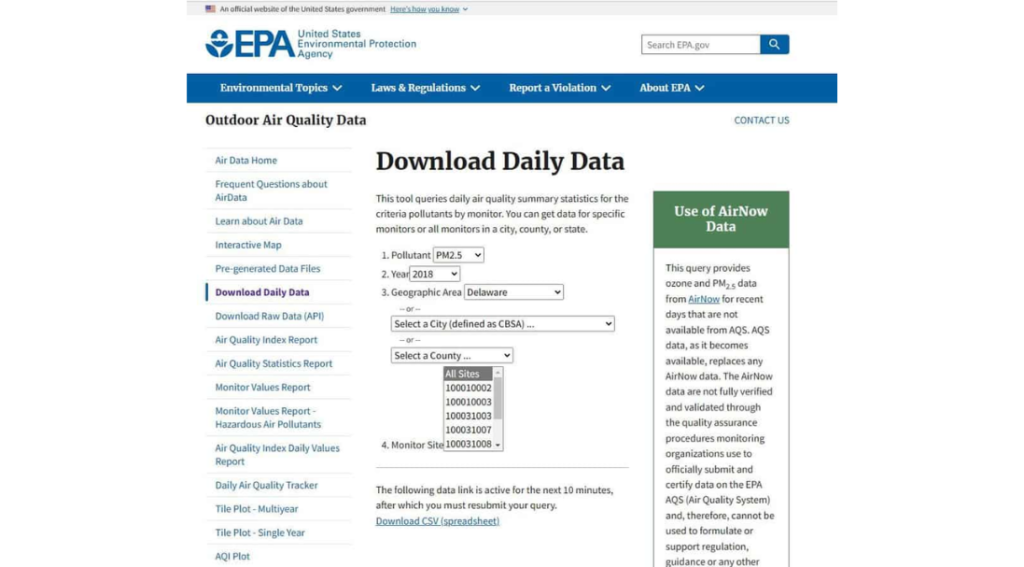
- Begin by accessing the “Download Daily Data” from the U.S. Environmental Protection Agency’s website.
- On the web interface, set the pollutant to “atmospheric particulate matter (PM 2.5)” and the year to “2018.”
- Define your geographic area of interest within the United States and click “Get Data.”
- Click “Download CSV Spreadsheet.”
- Open the .CSV file containing air quality Excel data. For the purpose of this tutorial, focus on Daily mean PM 2.5 information, Daily AQI value, site name, site longitude, and site latitude.
To prepare the data for use in the ArcGIS Pro environment, follow the steps outlined below;
- Select the “Site Name” column, click the “Data” tab and select “sort A to Z” to sort names from A to Z.
- Click Sort.
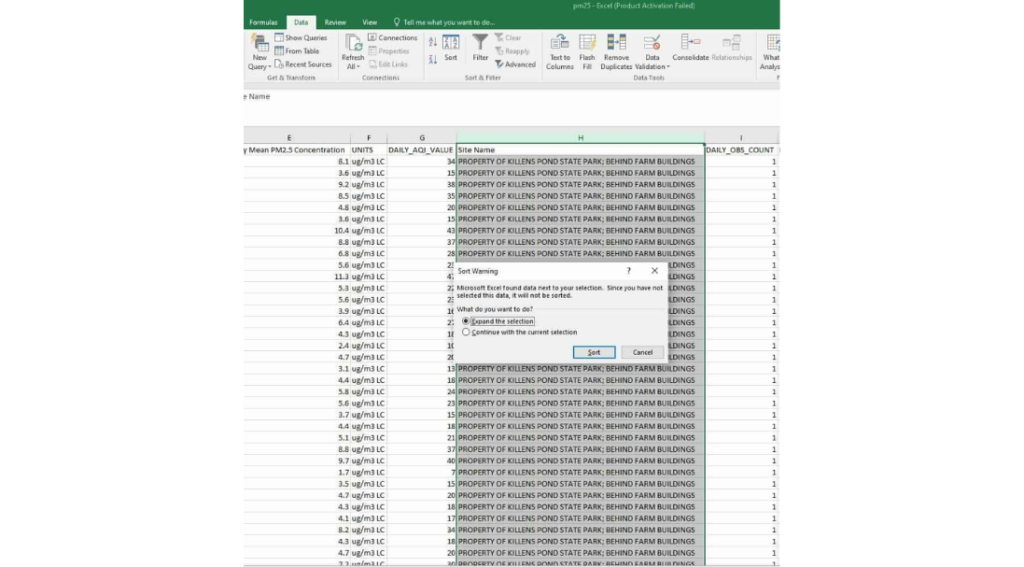
After sorting, categorize the data in Excel based on “Site Name” by selecting the columns of interest. During this classification process, estimate the average of daily Air Quality Index (AQI) and PM values to represent their annual data.
- Select all the data in Excel, then go to the “Data” tab and choose “subtotal.”
- Set the “At each change in” option to “Site Name” and the “Use function” to “Average.”
- Under the “Add subtotal to:” tab, select “Daily AQI,” “Daily PM 2.5,” “Site Longitude,” and “Site Latitude.”
- Click “Ok.”
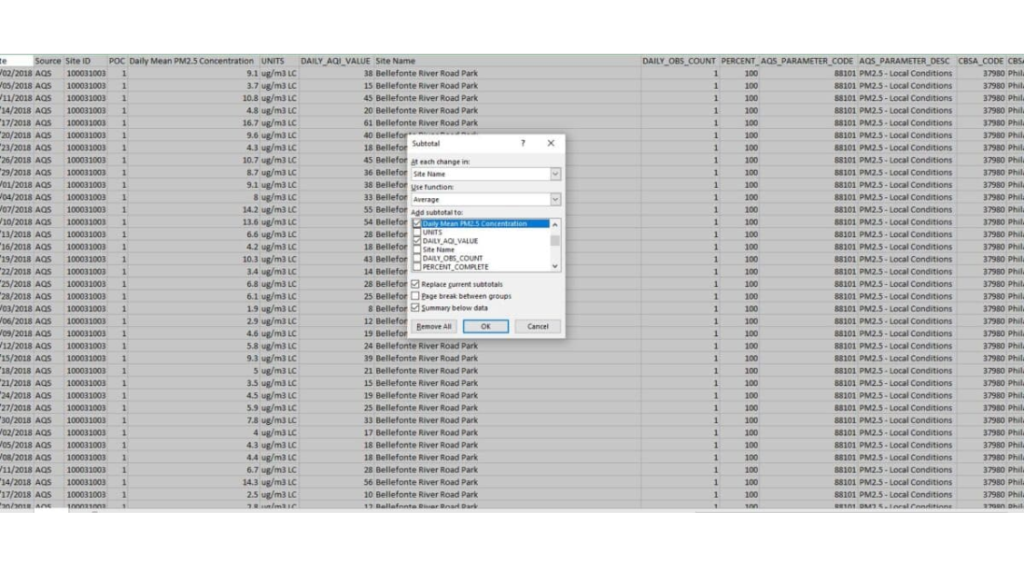
The result will be processed into a new tab labeled “2.”
- Export the results shown in figure 5 into a new Excel sheet by copying and pasting their values.
Given our interest in the averages of Daily AQI and PM values, we’ll filter the “Unit” column as follows:
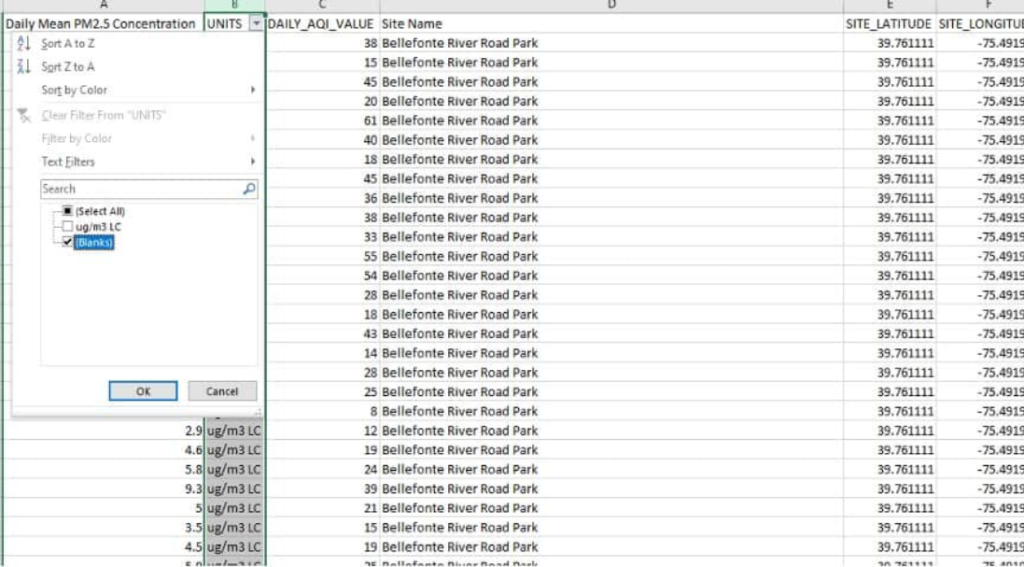
To filter the “Unit” column:
- Select the “Unit” column.
- Navigate to the “Data” tab and choose “Filter.”
- In the dropdown menu for the “Units” tab, unselect “select all” and choose “blanks.”
- Export the results into a new Excel sheet and save it in .CSV format for importing into the ArcGIS Pro environment.
Importing US EPA Excel data and boundary data into ArcGIS Pro entails the following steps:
To access the data for your desired US state or county, visit the TIGER/Line® Shapefiles on census.gov.

- Open ArcGIS Pro and create a new project.
- Under the Map tab in the menu bar, select the “Add Data” icon and navigate to the US state or county data you wish to import.
- Click “OK.”
- Repeat steps 2 and 3 to import the US EPA Excel sheet data.
- Right-click on the imported Excel sheet data in the Table of Contents and select “Display X and Y data.”
- Under the Display tab, set the X field to “Site Longitude” and the Y field to “Site Latitude.”
- Click “Ok” to display the Excel data.
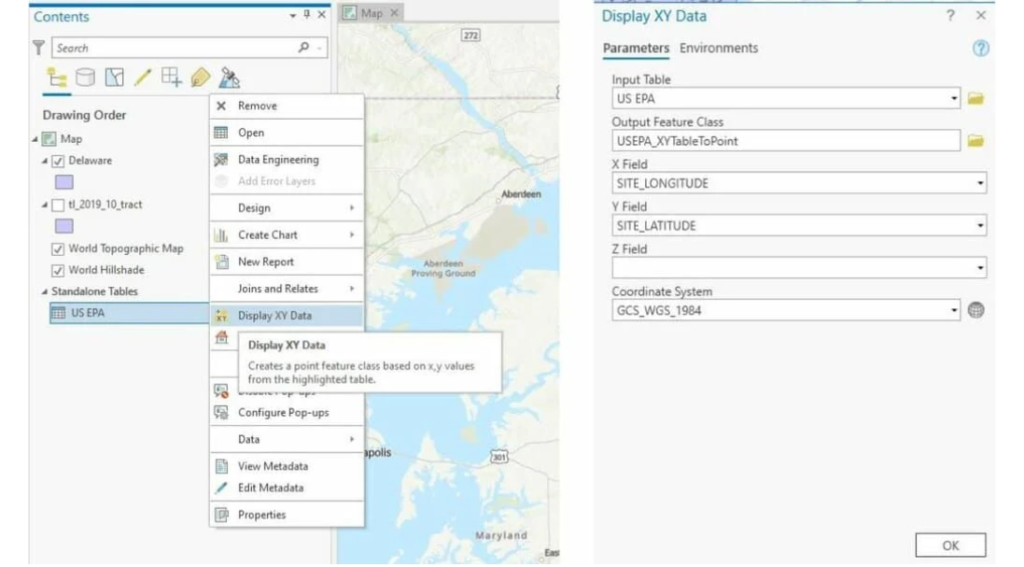
To perform spatial interpolation over the US EPA data for PM_yearly using the Inverse Distance Weighting (IDW) tool in ArcGIS Pro, follow these steps:

- Type and search for “IDW” in the geoprocessing bar.
- Set the “Input point features” to the displayed EPA data.
- Set the “Z value field” to “PM_yearly.”
- In the environments tab, configure the Processing Extent and Mask to match the US state or county boundary.
- Click “Run” to execute the spatial interpolation for PM_yearly data.
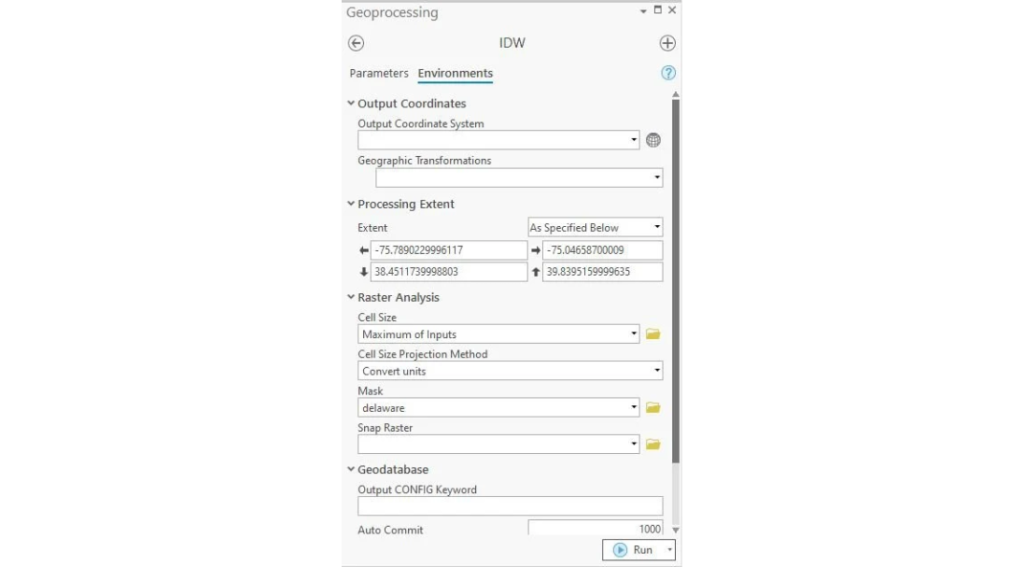
For spatial interpolation of AQI_Yearly data in ArcGIS Pro, follow these steps:
- Set the “Input point features” to the displayed EPA data.
- Set the “Z value field” to “AQI_Yearly.”
- In the environments tab, configure the Processing Extent and Mask to match the US state or county boundary.
- Click “Run” to perform spatial interpolation for AQI_Yearly data.
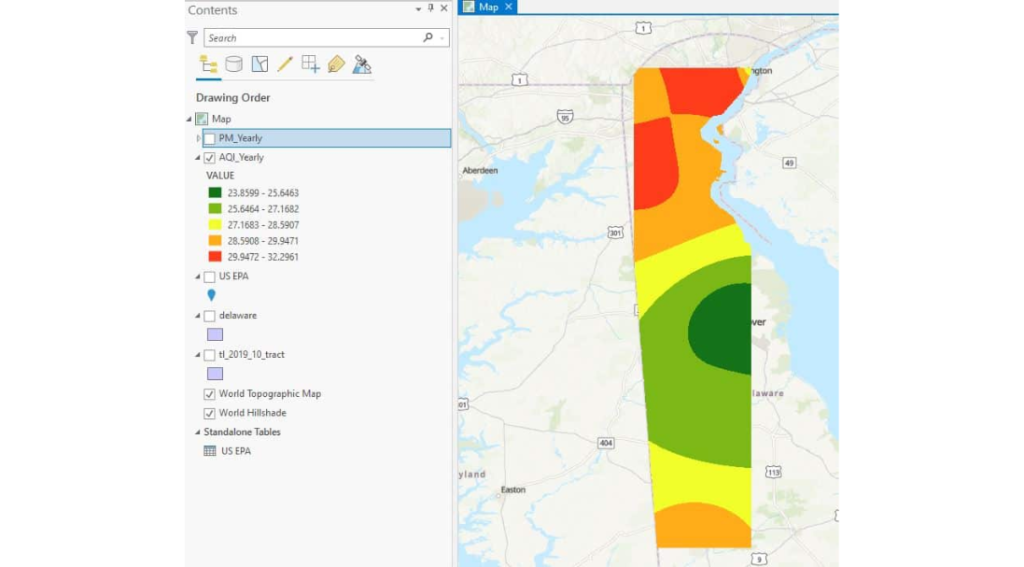
To visualize the relationship between PM_Yearly and AQI_Yearly data, create a scatter plot:
- Right-click on the displayed EPA Data.
- Select “Create graph” from the dropdown menu.
- Choose “Scatter plot.”

These steps will enable you to effectively analyze and visualize the data related to air pollution, aiding in informed decision-making and policy formulation.

